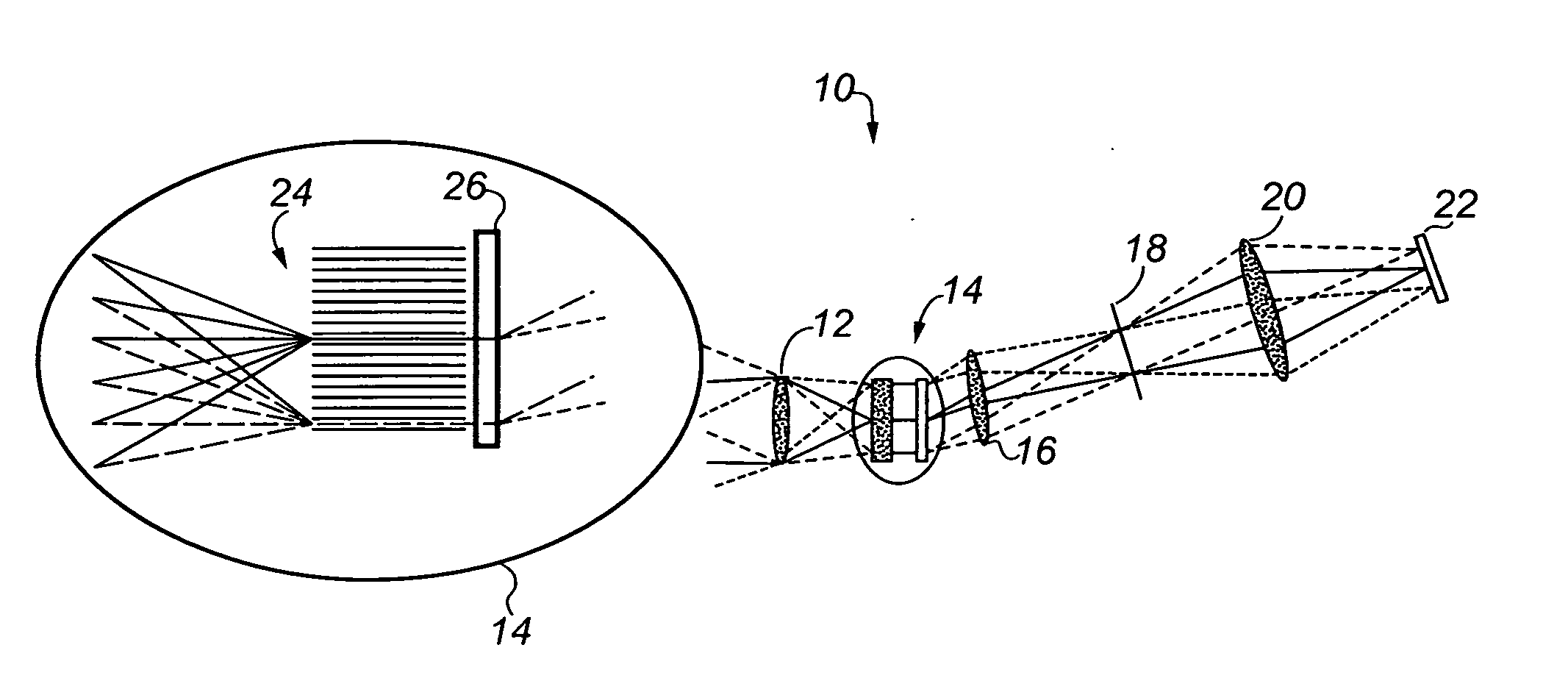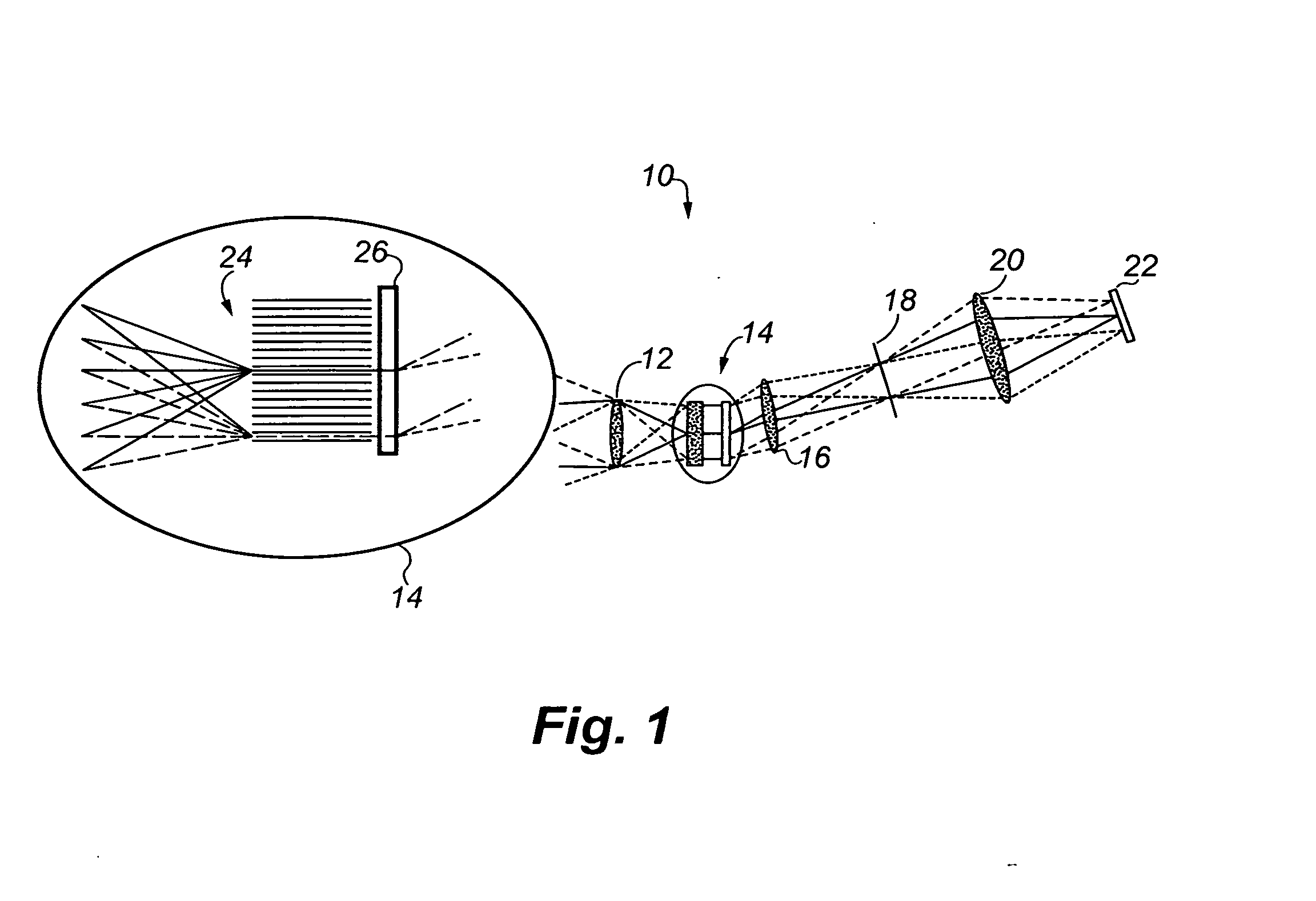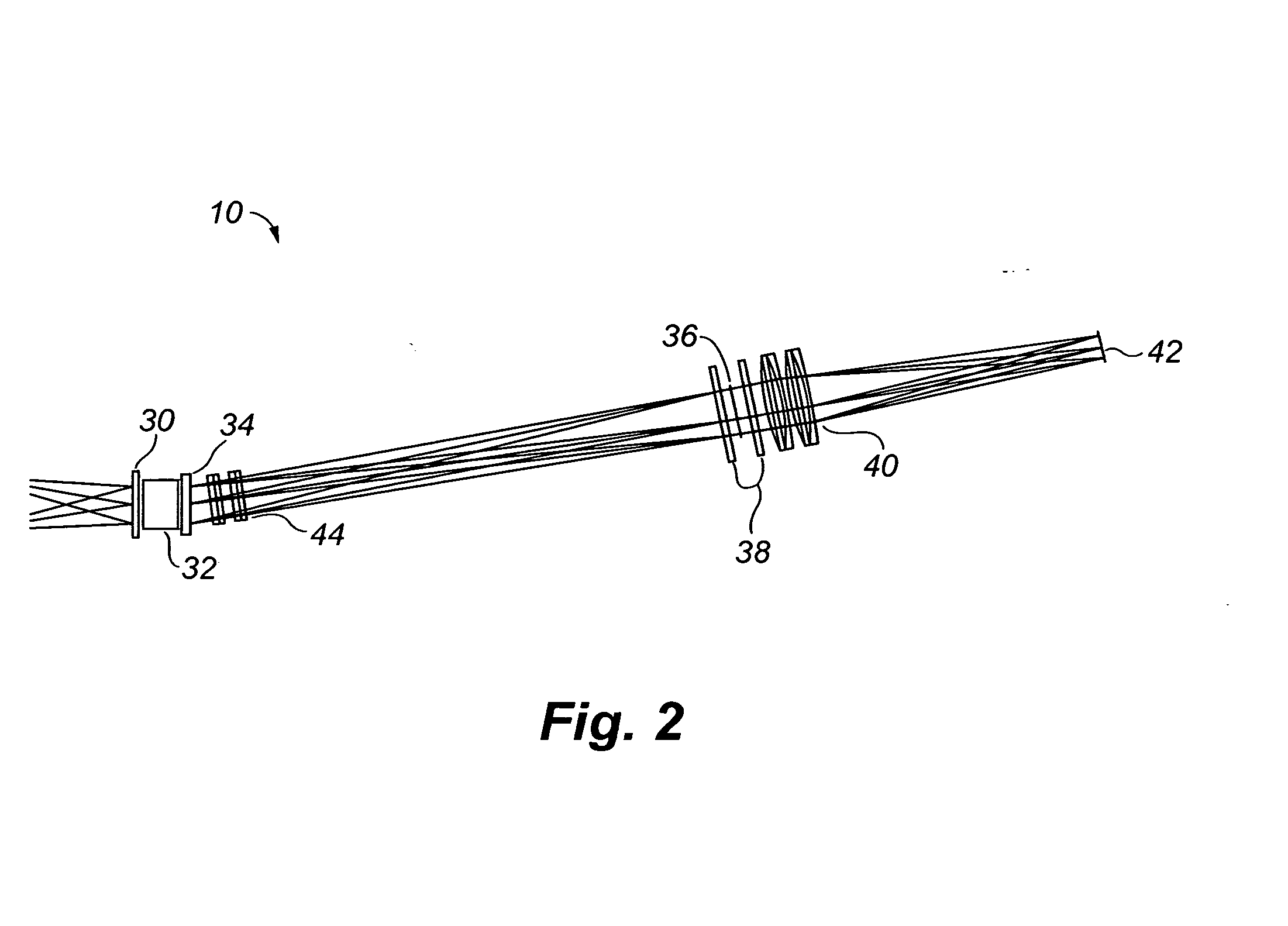Full-frame, programmable hyperspectral imager
a hyperspectral imager and full-frame technology, applied in the field of spectral and spatial imaging, can solve the problems of inability to meet the requirements of both options, inherently slow hyperspectral imaging, etc., and achieve the effect of potentially reducing the time for a given area for embodiments of the present invention
- Summary
- Abstract
- Description
- Claims
- Application Information
AI Technical Summary
Benefits of technology
Problems solved by technology
Method used
Image
Examples
example embodiments
[0037]FIG. 7 is a photograph of a working prototype of a dual micro-mirror array embodiment of the full-frame, multi-band programmable spectral imaging apparatus of the preferred embodiment described above with reference to FIG. 6.
[0038]FIG. 8 shows data from a complete-spectrum hyperspectral image of a test scene, obtained using the apparatus shown in FIG. 7, in which the spectral selection micro-mirror array was programmed to perform a 127-band, 400 nm to 740 nm implementation of the Hadamard transform technique. On the left of FIG. 8 is a panchromatic image of the test scene, produced by summing over all 127 spectral bands of the hyperspectral data cube. The test scene consists of three light sources: a standard broad-spectrum incandescent lamp at the top; a single line, discrete-spectrum, low-pressure sodium vapor lamp in the center; and a multi-line, discrete-spectrum compact fluorescent lamp (CFL) at the bottom. The displayed spectra to the right of the image, which are shown ...
PUM
 Login to View More
Login to View More Abstract
Description
Claims
Application Information
 Login to View More
Login to View More - R&D
- Intellectual Property
- Life Sciences
- Materials
- Tech Scout
- Unparalleled Data Quality
- Higher Quality Content
- 60% Fewer Hallucinations
Browse by: Latest US Patents, China's latest patents, Technical Efficacy Thesaurus, Application Domain, Technology Topic, Popular Technical Reports.
© 2025 PatSnap. All rights reserved.Legal|Privacy policy|Modern Slavery Act Transparency Statement|Sitemap|About US| Contact US: help@patsnap.com



